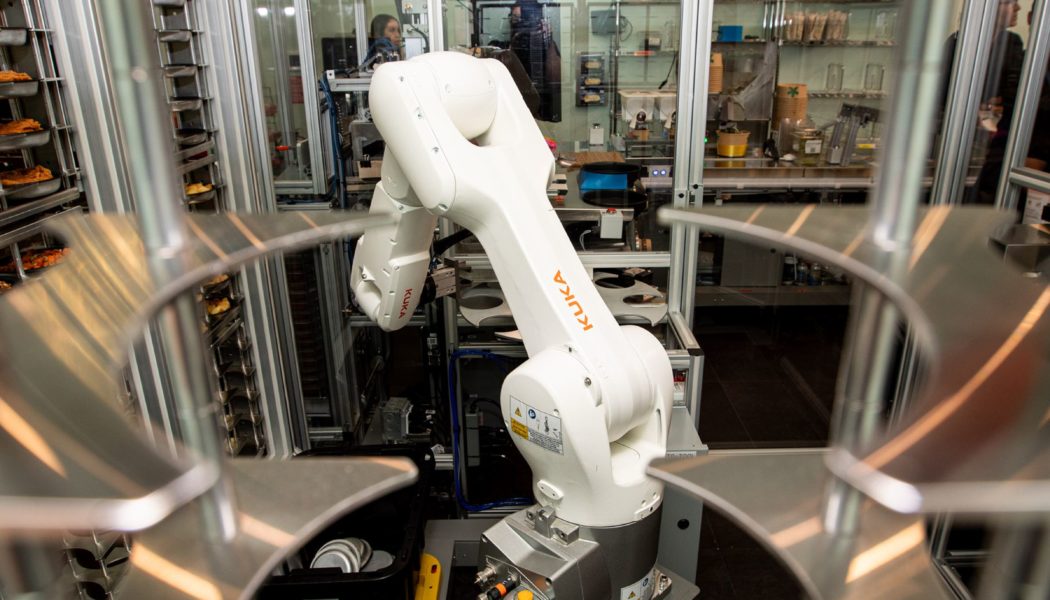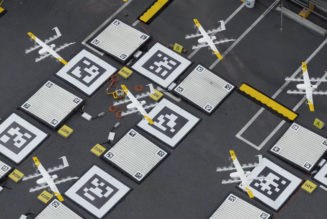Its robotic arm heats vegan burgers and crispy potatoes while relegating humans to assembly line jobs.
Photography by Amelia Holowaty Krales
Share this story
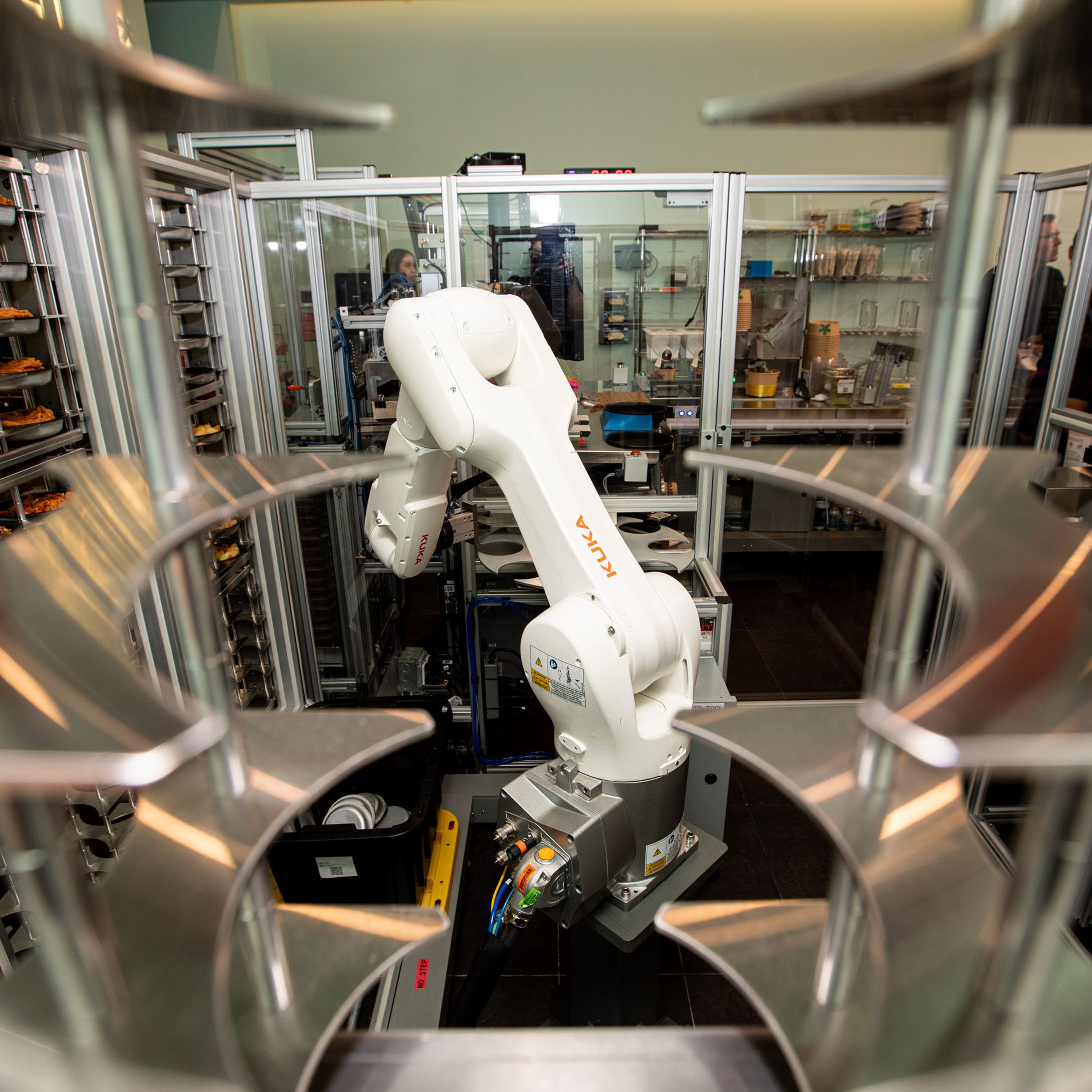
In many ways, Kernel resembles other restaurants catering to office workers — it’s a vegan fast-casual joint sitting in an unassuming block of Manhattan, nestled between outposts of Paris Baguette and Just Salad. It has sandwiches. It has sides. It has a smartphone app. It has scheduled pickups. It has… a robotic arm?
Kernel, the brainchild of Chipotle co-founder Steve Ells, has been called a possible reinvention of lunch. The menu was designed by former Eleven Madison Park chef and Kernel chief culinary officer Andrew Black. Unlike other restaurants serving Manhattan’s office workers, Kernel only has three human employees on-site at all times, which Black tells The Verge is the point.
“Traditional fast food restaurants have 8-15 people on staff for the week, which creates a lot of administrative work for managers, so they can’t focus on delivering value to customers,” Black says.
The key to this was finding a way to keep up with potential orders and maintain quality without increasing administration costs. Supposedly, the robotic arm is the solution.
But Kernel’s robotic arm doesn’t actually cook the food. Its central kitchen employs 10 humans — who occasionally shift to the store if needed — who make parcooked meals. The food is couriered to the restaurant via humans on bikes. Then, the robotic arm lifts the delivered food and places it into a specially designed oven. Humans take the hot dishes, pack them up, and deposit them into lockers for customer pickup — that part is a little like an automat.
Black says having the robot arm allows them to pay human employees, both on-site and in the central kitchen, $25 an hour, significantly higher than the $16 / hour minimum wage in New York City. But the arm — which is expensive and must be regularly maintained — is picking up parcooked food (prepared by humans off-site and brought over by humans) and putting it into an oven (where it is then extracted by another human). A typical fast-food restaurant employs eight to 15 people; Kernel has 10 people in an off-site central kitchen, three people on-site, and an unknown number of bike couriers. Where are the cost savings?
Kernel worked with robotics company Kuka, which provided the robotic arm. Its significant tech innovation is the software that determines how long to cook the items.
Olaaf Rossi, Kernel’s chief technology officer, says the company was mindful of how they designed the entire system, from finding Kuka to choosing the microservice to help keep reheating times consistent.
“We went through all the steps in designing the program [to run the oven and assembly system] and found a lot of waste, like in conveyance or movement or inventory,” Rossi says. “So we were mindful when designing that to reduce the waste so that it can work with a three-person system at a reasonable pace and not stress out our machines or people.”

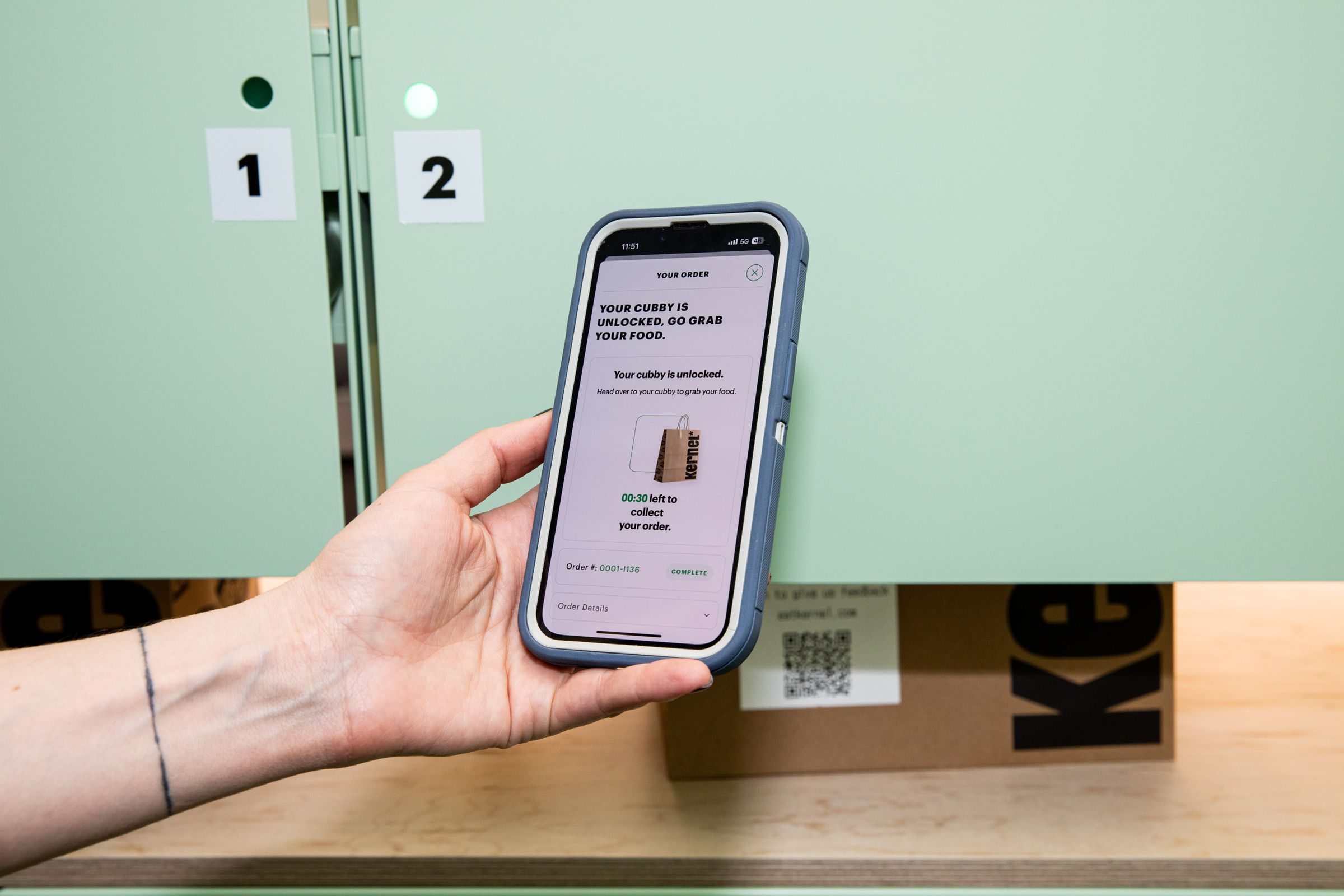
When an order comes in through the Kernel app (people can only order through the app), it goes through the orchestration system, which sends commands to the robot arm to prioritize dishes based on order sequence. (It is not entirely clear how different this is from how humans handle orders in restaurants.)
Robots are generally not used much in a restaurant setting. They are mostly confined to manufacturing activity, but it’s not unheard of for a new bar or coffee shop to use robotic arms. Robot arms get attention and lots of social media pictures; trust me, I still gleefully take videos of robots making my iced coffee when I come across them.
Black, Kernel’s chef, said the restaurant’s selling point was never a robot; it was only a means to an end, with the end goal being super efficient and offering great food.
The question, though, is whether it works. Kernel says it’s seeing a lot of interest from customers, though the times The Verge has been in the store, it’s been largely quiet. And in a market saturated with assembly line lunch places that are always busy, that will be a problem.

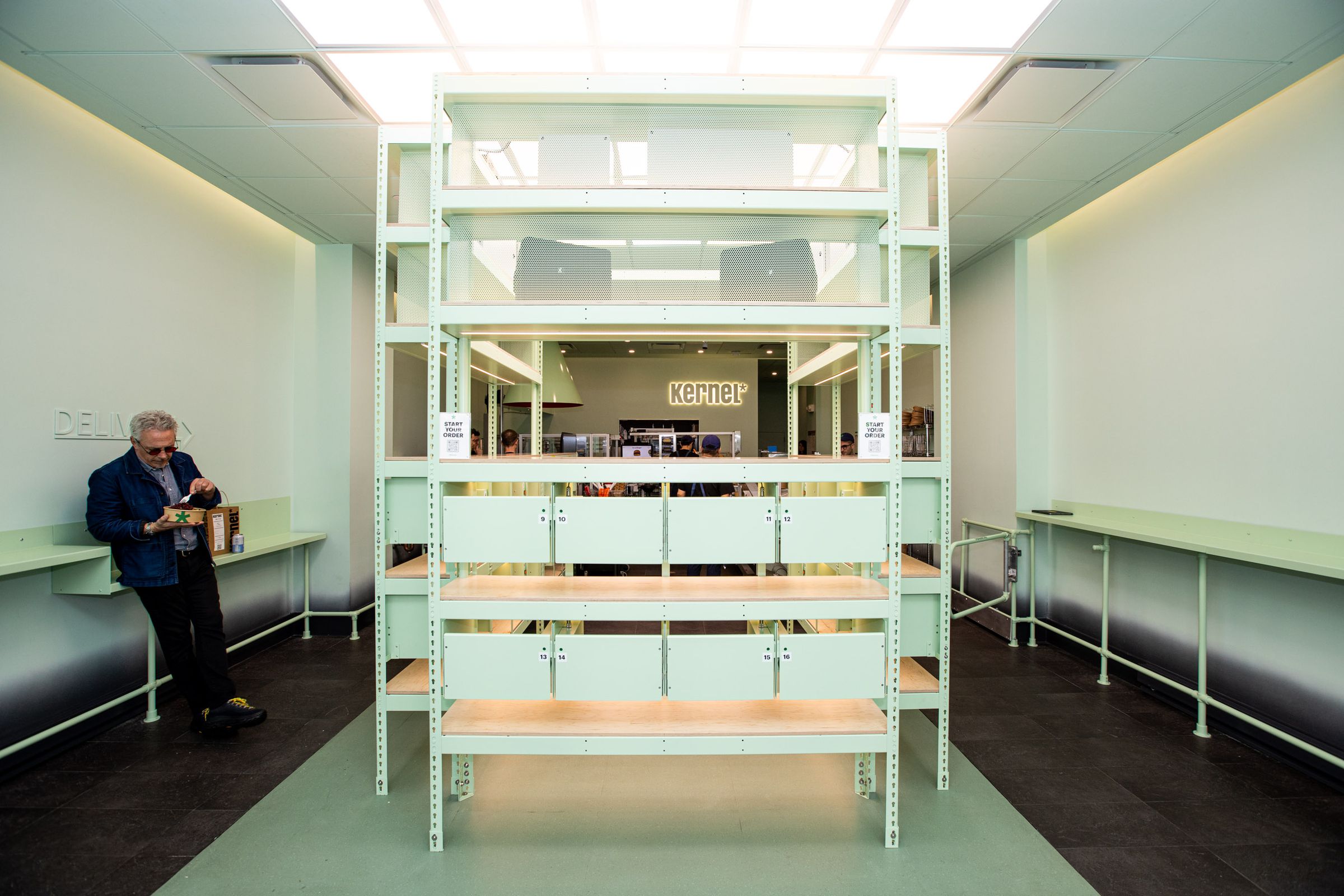
So far, Kernel only has one branch, on Park Avenue South in midtown Manhattan. But it has big plans. It will expand its footprint in New York City by the end of the year. I asked Black if there was a tipping point when it would start opening new locations. Was it a certain number of customers at the midtown store? No, in opening the first store, the plan was always to open more.
Kernel raised $36 million in funding from several venture capital firms. Its investors include Raga Partners, Rethink Food, Virtru Investment Partners, and Willoughby Capital. PitchBook classifies it as a robotics company valued at $100 million.
“But what about the food?” you ask.

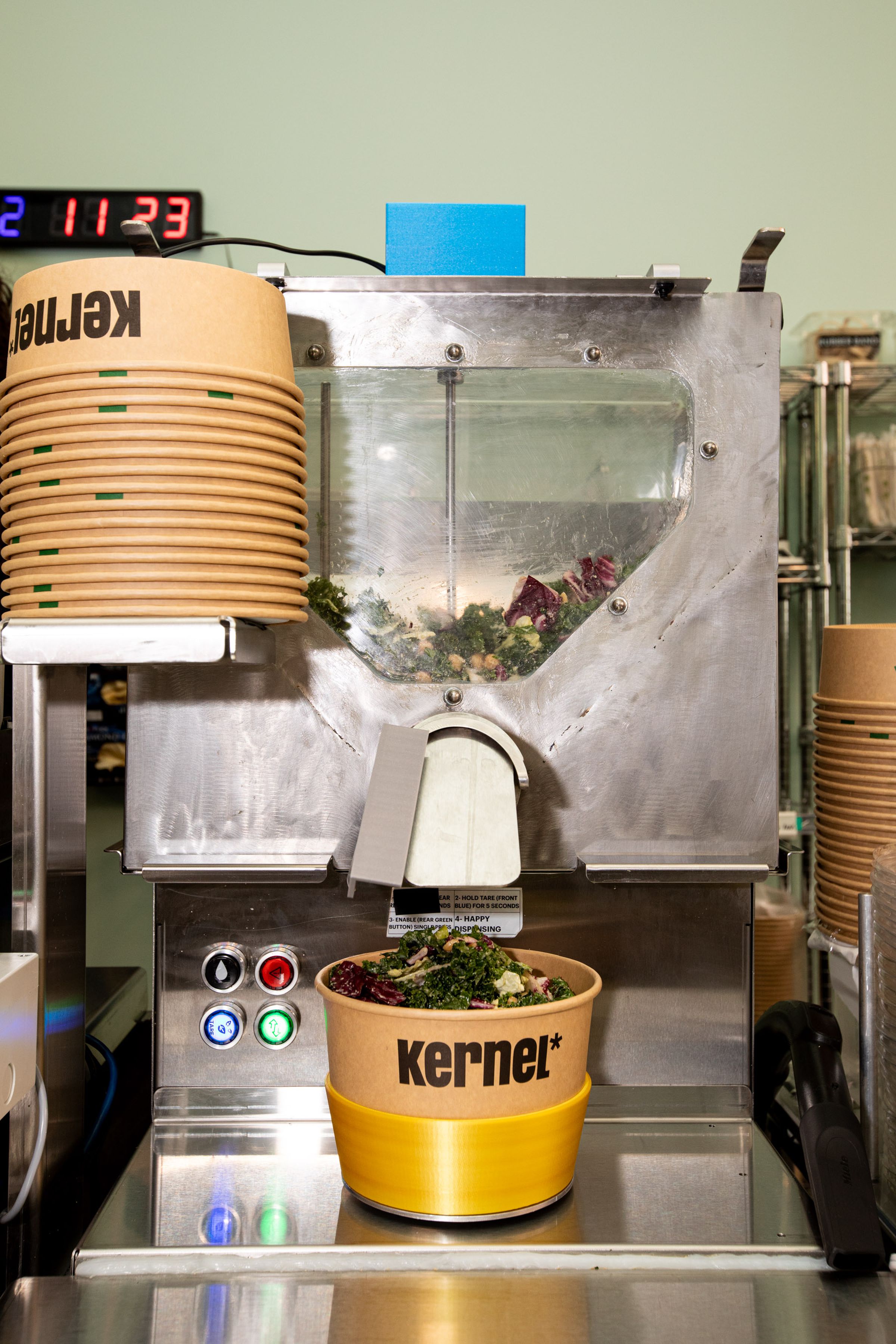
I know no one comes to The Verge for food reviews, but I feel this is warranted. I didn’t like it. I have nothing against vegan burgers (Superiority Burger is amazing; the hype is worth it), vegan chicken, or just the thought of vegan fast casual. The “burger” was dry, and the crispy potatoes felt powdery, though I loved the chipotle mayo you can dip the potatoes in and the tomato onion salsa on the burger. None of this, of course, is the fault of a robotic arm. It’s because the food was prepared beforehand. Nothing comes back from that. It’s not your fault, little robot arm; you did your job.
